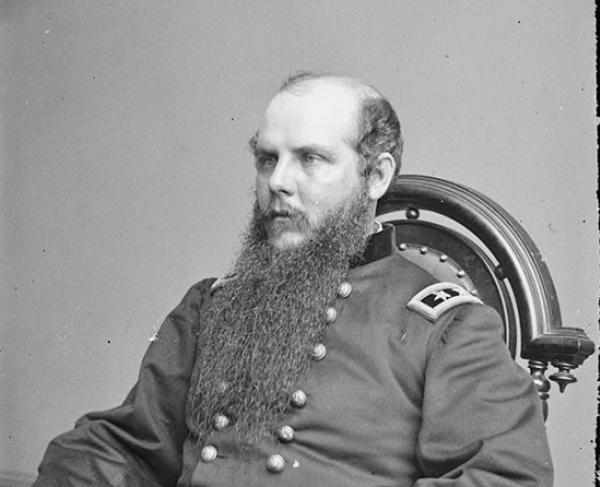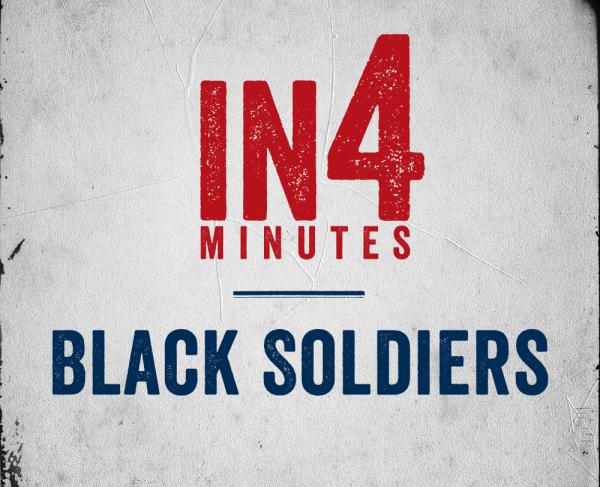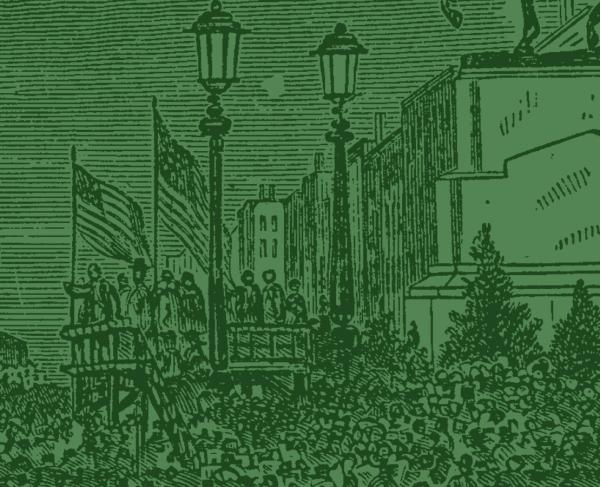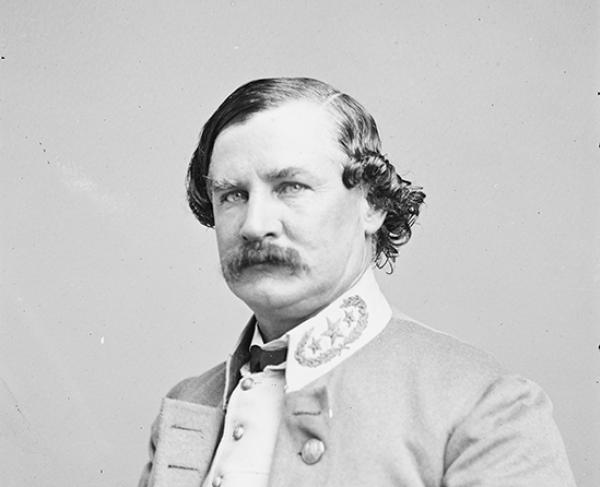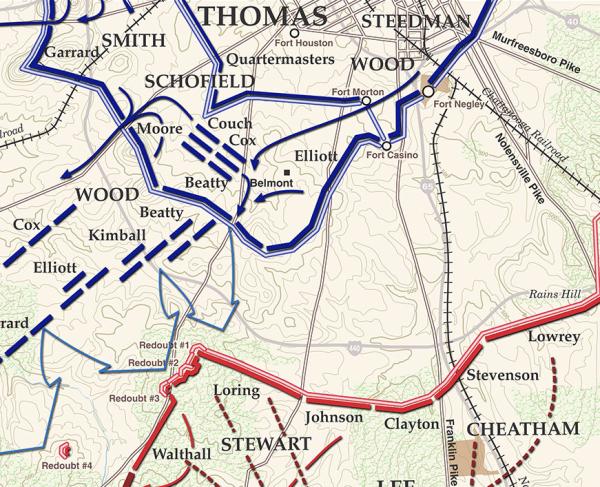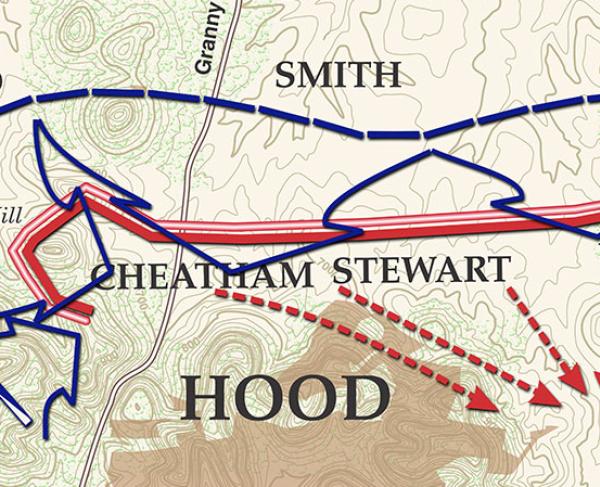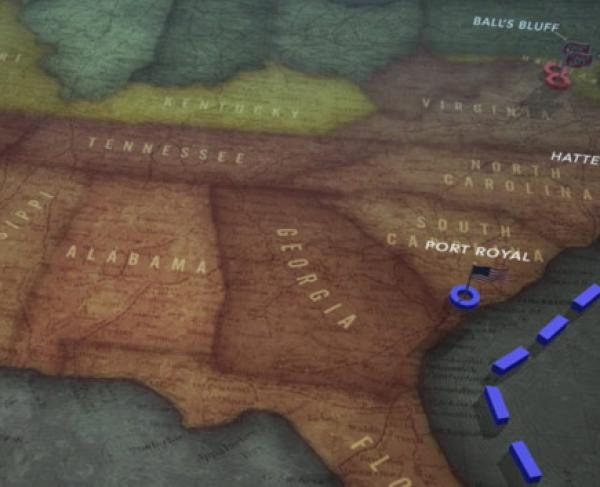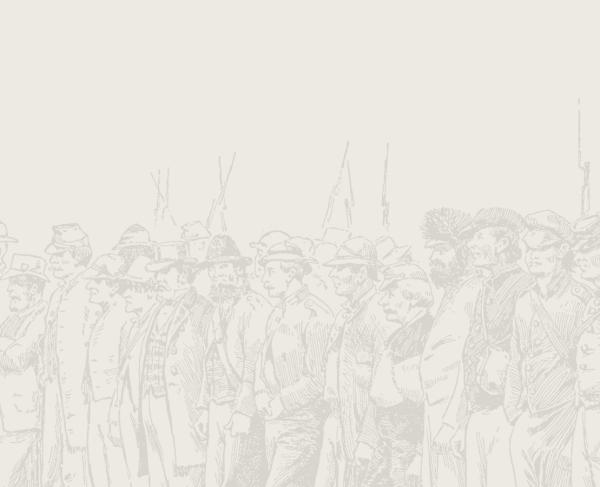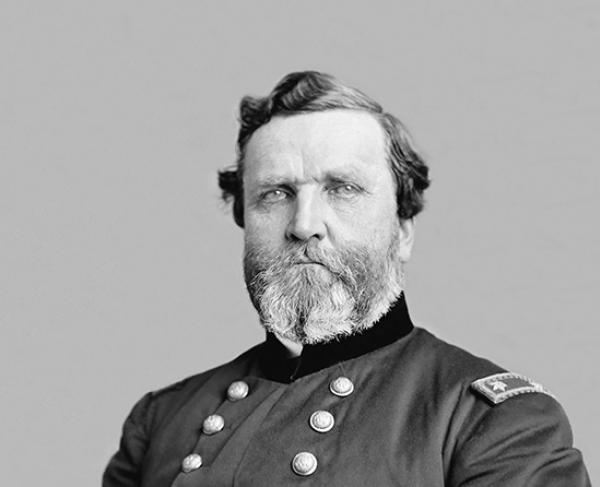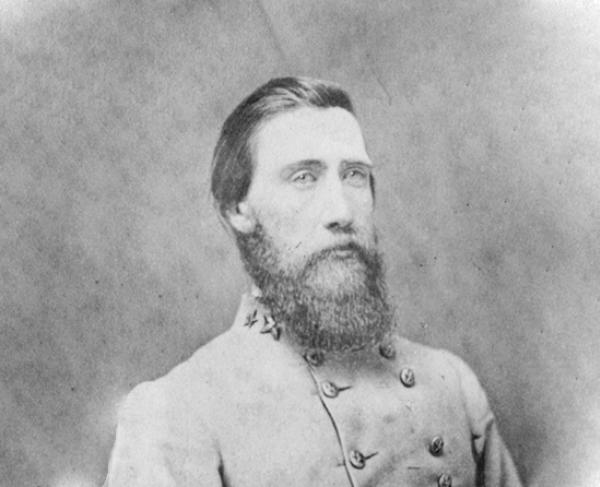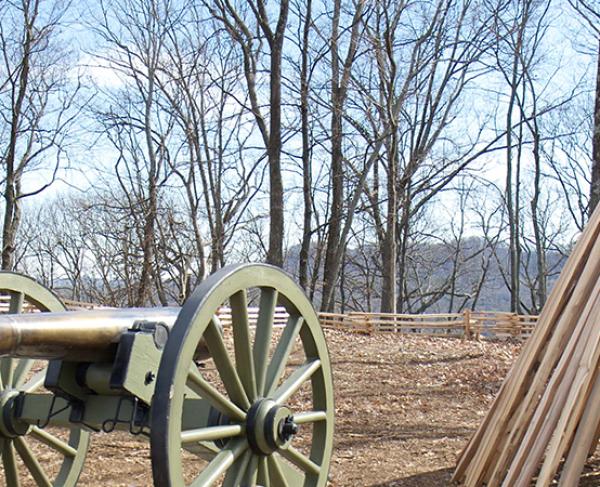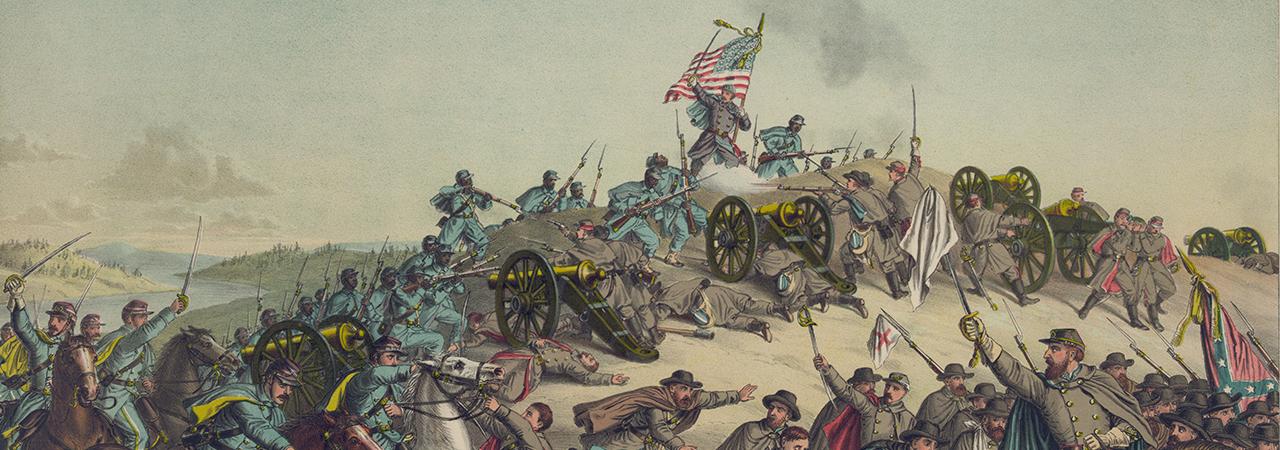
Nashville
Davidson County, TN | Dec 15 - 16, 1864
Confederate General John Bell Hood participated in some of the most brutal and iconic actions of the Civil War, including the breakthrough at Gaines’ Mill, the hellacious fighting at the Cornfield at Antietam, and the drive to Snodgrass Hill at Chickamauga. Hood had also served under some of the most famous generals in the south: Lee, Longstreet, Johnston, and Jackson. Since mid-July of 1864, though, this proud general’s name was linked to Confederate disaster after disaster, and in the waning weeks of 1864, he was leading an unrelenting campaign. The missed opportunity at Spring Hill gave way to a disaster on an epic scale at Franklin, and now the Confederate Army of Tennessee faced the united and fortified Armies of the Ohio and of the Cumberland near Nashville.
Outnumbered by a factor of more than two-to-one, Hood resolutely and mistakenly stuck to the offensive. His grand strategy included the taking of Tennessee’s capital, Nashville, and then moving farther north into his home state of Kentucky to gather provisions and volunteers, and then planned to turn east to join Robert E. Lee’s beleaguered forces in Virginia. The reality of the situation passed Hood by, and he was simply grasping at non-existent straws.
Hood reached Nashville on December 2 and began to stake out a position south of the city, hoping to draw the Union forces into a costly attack. The overall Federal commander in Nashville, Maj. Gen. George H. Thomas, received telegrams from Ulysses S. Grant and Abraham Lincoln urging him to strike the Confederate army. Thomas delayed the attack for nearly two weeks, citing freezing temperatures, full-blown ice storms, and limited cavalry support, but his superiors were unimpressed. Grant was on the verge of sacking Thomas before word arrived that Thomas was on the move.
On December 15, Thomas launched a demonstration on the Confederate right across the line of the Nashville & Chattanooga Railroad. At the same time, his main assault fell on a cluster of redoubts on the Confederate left.
The diversionary assault force was a true hodgepodge of units and men. The troops were pieced together from undersized units of the Army of Georgia, Army of the Tennessee, United States Colored Troops, and other seemingly homeless units. Yet, this force performed its job and struck the Confederate right, although the action failed to draw Hood’s attention for long.
On the Confederate left, Thomas swung the bulk of his forces out of the defensive of Nashville in a grand-wheeling offensive. Confederate Redoubts #1-#5 fell as the Federals outflanked and overwhelmed the left of Hood’s line. What remained of Hood’s army retreated two miles further south during the night and established a new defensive line.
Thomas renewed the attack on the afternoon of December 16. He followed the pattern of the first day, hoping to pin the Confederate right while smashing the left. This time the diversion was more successful. The Southerners defending Peach Orchard Hill repulsed the four-brigade Union attack, but they could not spare any reinforcements to bolster other parts of their lines.
The Confederate left was anchored on Compton’s Hill. In the shadows of the setting sun, Brig. Gen. John McArthur, on his own initiative, ordered his three brigades to charge the hill. McArthur’s attack broke the Confederate line and soon threatened to sweep up Hood’s whole army. Col. William Shy of the 20th Tennessee died defending the hill, and the prominence was renamed in his honor.
Hood ordered his army off of the field, ending offensive operations. In six months of campaigning, the Army of Tennessee had lost nearly 75% of its fighting force and ceased to be a serious threat to the Federals. The Union victory at Nashville shattered Hood's Army of Tennessee and effectively ended the war in Tennessee. Following Nashville, the fall of the Southern Confederacy was now only a matter of time.
The Union victory at Nashville shattered Hood's Army of Tennessee and effectively ended the war in Tennessee.
Nashville: Featured Resources
All battles of the Franklin-Nashville Campaign - September - December 1864
Related Battles
55,000
30,000
3,061
6,000

